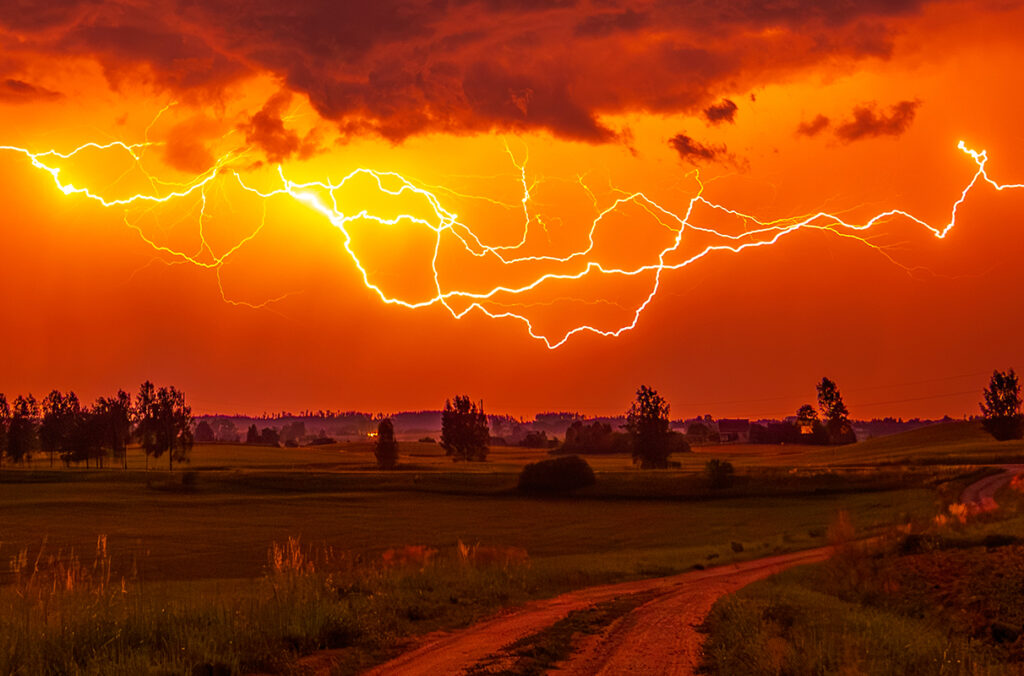
The Northwest is bracing for a significant increase in cloud-to-ground lightning days and a corresponding rise in wildfire risks, according to a groundbreaking study from Washington State University. Published in the journal Earth’s Future, the research employs a novel machine-learning approach to project these changes across the Western United States by the mid-21st century.
The study highlights that parts of Idaho, Washington, and Oregon could experience four to twelve additional lightning days annually, particularly in the Rocky Mountains. These projections, combined with future wildfire risk assessments, indicate a heightened likelihood of lightning-induced fires across 98% of fire-prone Western lands.
Machine Learning Offers New Insights
Traditional climate models have struggled to simulate future lightning events due to their coarse geographic resolutions. However, the machine-learning models developed for this study provide a more detailed forecast. Dmitri Kalashnikov, the lead author and a post-doctoral fellow at the University of California, Merced, explained that the models use a convolutional neural network tailored for each 69-mile grid cell across the Western U.S.
“There are already a lot of studies that say future wildfire activity will increase in the Western U.S. and that’s without even considering potential lightning increasing, which we’re showing is going to happen in many areas,” Kalashnikov noted.
By analyzing meteorological data from 1995 to 2022, the research team trained the network to make mid-century projections. This approach allowed for precise predictions of lightning and associated fire risks at a finer geographic scale than previously possible.
Implications for Wildfire Management
The study underscores the urgent need for enhanced forest management and community preparedness as climate change exacerbates wildfire conditions. Deepti Singh, an associate professor at WSU Vancouver and co-author of the paper, emphasized the Northwest’s vulnerability to increasing fire-related hazards.
“The Northwest is emerging, in this study as well as in others, as the region where fire- and fire-related hazards are likely to increase substantially more than in other parts of the western U.S.,” Singh stated.
Lightning currently accounts for more than two-thirds of the acreage burned in Western wildfires. The new projections suggest that even areas with stable lightning occurrences could see increased fire risks due to worsening weather and climate conditions, as measured by the Fire Weather Index.
Regional Variations in Lightning and Fire Risk
While the Northwest faces a notable rise in lightning days, the study also reveals regional variations. For instance, parts of Utah and Arizona are expected to see fewer lightning days but an increase in potential lightning-caused fires due to heightened wildfire risks.
The Southwest, in contrast, may experience fewer increases in lightning days and even declines in some areas. Nevertheless, this region is still projected to witness more days with a likelihood of wildfires ignited by lightning.
Looking to the Future
As the planet continues to warm, the implications of this study are clear: proactive measures are essential to mitigate the growing threat of wildfires. The research not only provides a detailed forecast of future conditions but also serves as a call to action for policymakers, forest managers, and communities across the Western U.S.
With the period from 2031 to 2060 just around the corner, the findings highlight the need for immediate strategies to address these challenges. As Kalashnikov and his colleagues continue their work, the hope is that their insights will inform effective responses to the evolving climate landscape.







